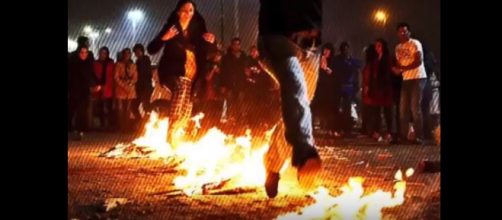With Iran protests occurring in December and January, it is clear that the Iranian people are reaching their breaking point. Coming so soon after those protests, the Iranian Fire Festival, which has great cultural significance, is also likely to have more political significance this year.
Those protests started over the economy but quickly took on a more political tone, as those who participated risked arrest and even capital punishment to denounce the Supreme Leader and call for an end to the rulership of the regime.
Iranian regime fears over this year's fire festival
The regime is fearful of large gatherings, worried that these gatherings will lead to larger protests. The PMOI/MEK is encouraging Iranians to use this celebration as a platform to protest the regime’s repressive tactics. The group has been frequently targeted by the regime which is the reason these demonstrations are taking place. Yet the PMOI/MEK is serving as a voice of the Iranian People, one that stands in sharp relief to the picture being presented by the regime of Iran and the Iranian people.
The security tactics of the regime prior to the FireFestival show their fear of a nationwide revolt, something that they believe can only be avoided with harsh repressive measures.
In the Khazaneh district, security forces are roaming the streets with motorcycles to spread fear in society and crackdown on any kind of public dissent during the Fire Festival.
Iranian protesters have used the celebration as the means to demonstrate their displeasure with the regime and its fundamentalism. For many, the breaking point is the economy. While the regime pays for military intervention throughout the region, its own people are struggling with high unemployment, smaller subsidies, inflation, and those who have jobs not being paid.
Today, Iranian protesters burned posters with Supreme Leader Khamenei on them, and others have covered Tehran’s streets with anti-regime slogans. Others are sending balloons into the sky with “Death to Khamenei, Hail to Rajavi” written on them.
In northwest Iran, security forces are on the scene, but people are defying them. As a result, there are threats of arrests.
Iranian regime crackdown
The history of Iran is rich and varied, but the regime seems intent on shutting out anything that came before Islam or that might exist outside of the mullahs’ narrow worldview. Cultural celebrations, such as the Fire Festival, are a source of clashes between the people and the government. In recent years, the culture has become political for the Iranian people, as they use these celebrations to speak out against the regime and its abuses.
The brutal crackdown by the regime is going to continue. At the beginning of March, reports came out that another activist was tortured to death while in police custody.
It was the 14th case since the protests began in December. There is no reason to believe that the Iranian people will not face the same tactics after the Fire Festival.
While the Iranian people are willing to stand up for freedom, it still remains to be seen how the International Community will respond to the protests. In December, U.S. President Trump expressed his full support for the protesters and the Iranian people. Part of that support for further protests needs to involve maintaining lines of communication with the protesters and preventing Tehran from concealing its human rights abuses during its efforts to end any dissent.


